Millions of employees and students worldwide have been forced into remote working or distance learning. As a result, Microsoft Teams has seen a spike of 12 million users just between March 12 and 19 alone, and recently hitting 75 million daily users. Woah!
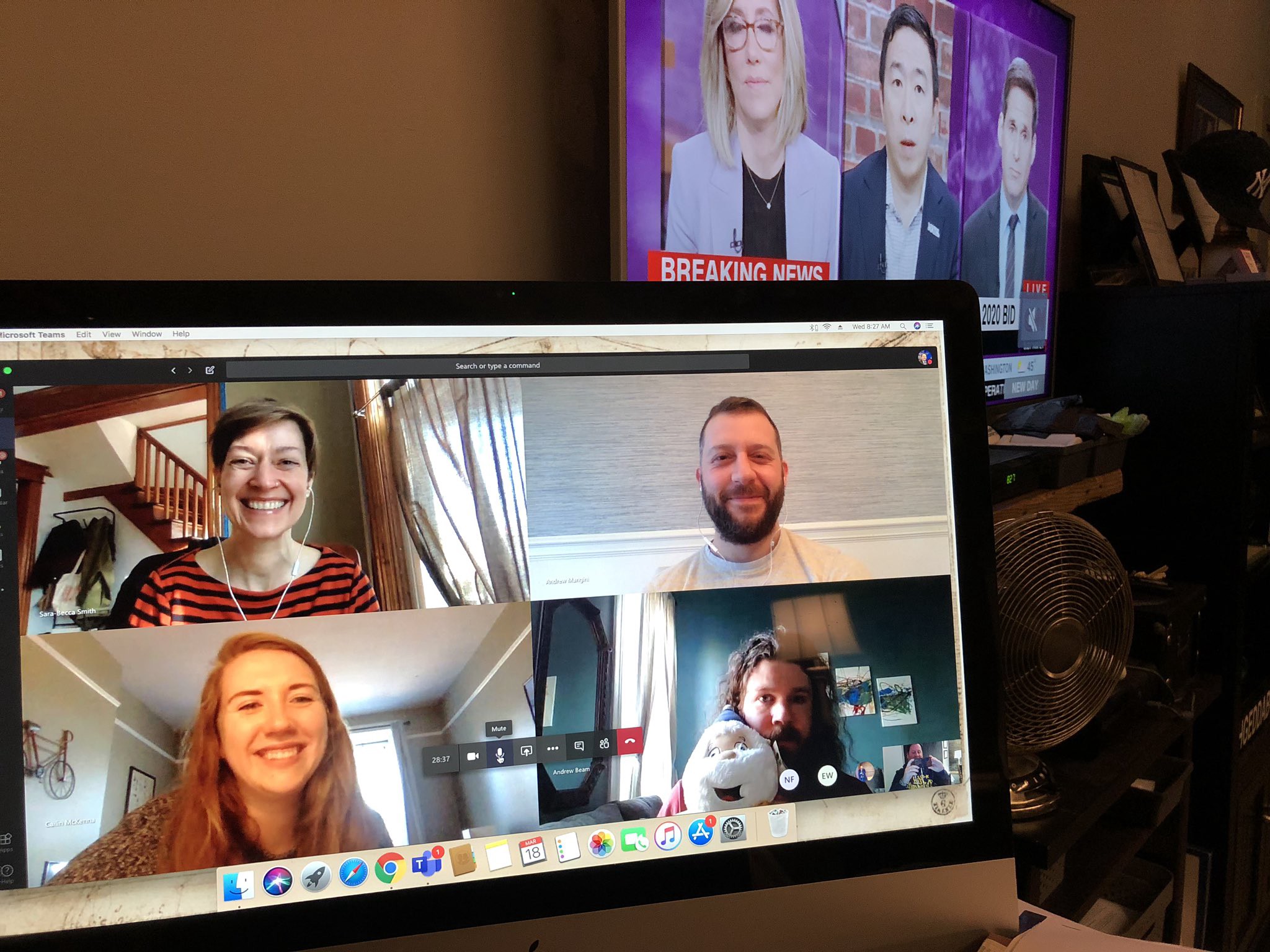
If you’re using Microsoft Teams, an essential feature is online meetings and video conferences. There are a few ways to schedule and start Teams meetings; how you do it impacts the types of meetings you can run. This article overviews all the meeting types, how to set them up, and how to get them started.
If you want to know how to run a Teams meeting, that’s a separate article (coming soon).
For the sake of this article, the terms “meeting”, “video conference”, “conference call”, “screen share”, and “call” all mean the same thing. Keeping things simple!
When you’re ready to have people join your meeting, read up on my article for joining Teams meetings.
Meeting types
There are several types of meetings you can run in Teams. Each meeting type listed below has a full section for description and instructions further down in this article. Scroll down for the one that matches your situation and bookmark this article for later use in case you need to refer back.
- Ad hoc meeting, video conference, or screen share with an individual or group of people
- Ad hoc meeting with members of a Team or Channel only
- Scheduled meeting with internal and/or external attendees
- Scheduled meeting with members of a Team or Channel only
For the sake of this article, the terms “private chat”, “group chat”, “instant message”, “chat”, and “IM”, all mean the same thing.
Regardless of whether your meeting is intended to be audio only, full-on video, or maybe include screen sharing, all meetings are essentially the same in Teams; you can always add video or screen sharing to an audio call.
If you join a Teams meeting from your mobile device, it’s important to know that you’re not joining over the telephone; you’re not using calling minutes. You’re using your data plan — or the local wifi network (usually a better idea) — to join. So plan accordingly if you have a limited data plan.
0. Prerequisite: your calendar in Teams is the same one as your calendar in Outlook
This is a critically important thing to know. When you schedule a meeting or appointment in Outlook, it shows up in Teams and vice versa. But that doesn’t mean any Outlook appointment automatically offers a way to join a Teams meeting. To ensure you have an online meeting space, you want to schedule meetings in Teams, not Outlook.
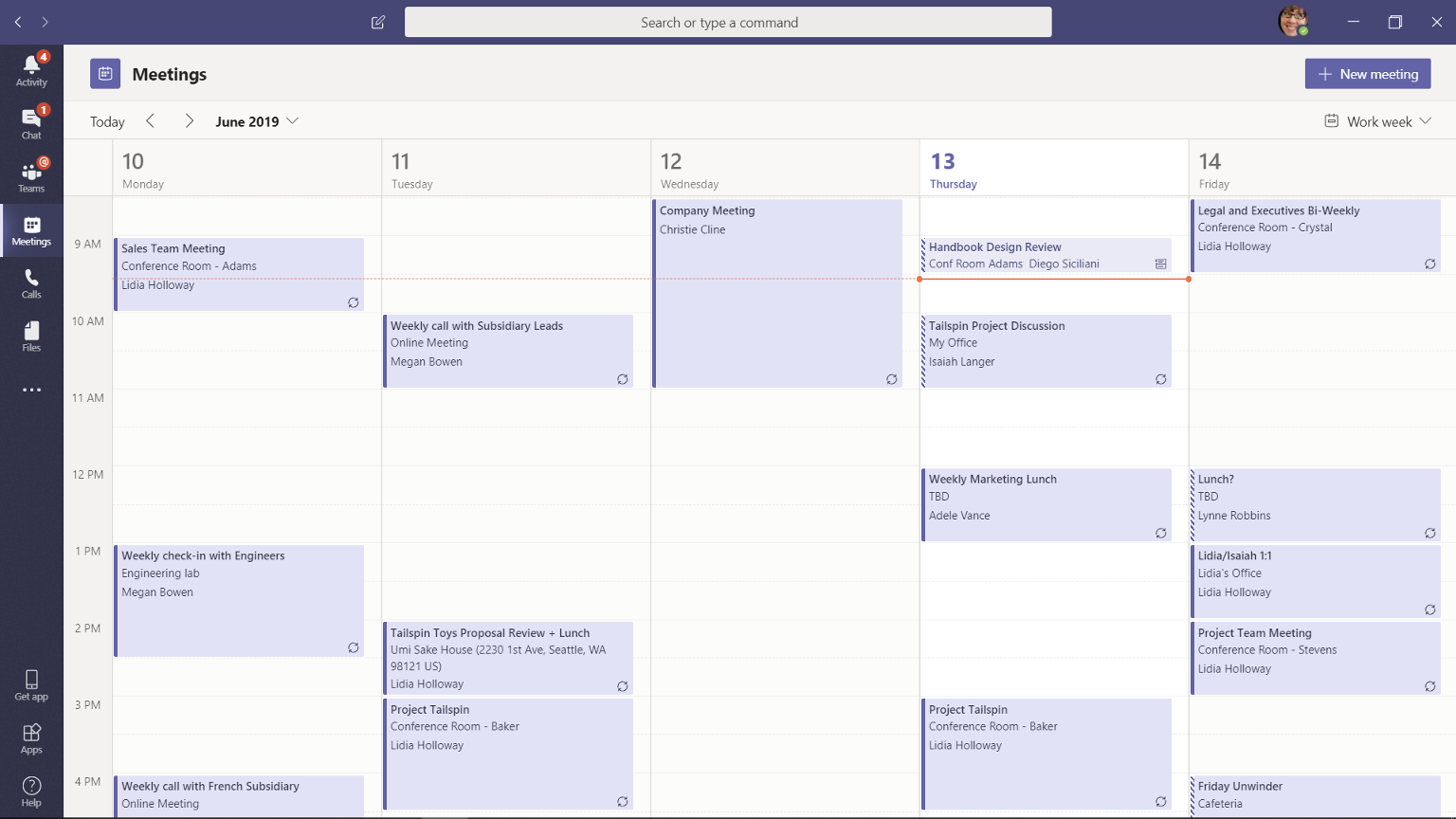
This article will cover how to schedule and start meetings from Teams only. If you want to schedule a Teams meeting in Outlook, follow these steps. I don’t include it here because 1) it’s well documented elsewhere and 2) it’s prone to user error (e.g., not clicking the Add Teams meeting button in Outlook).
I advise you to start using Teams to manage your primary calendar, or at least when scheduling meetings with other people that need the online conference aspect.
1. Starting an ad hoc meeting with an individual or group of people
Using Teams calling
If your organization has enabled Teams calling, where your physical desk phone or your personal cell phone is connected to a company-provided number that’s connected to Teams, you can easily start a call with anyone using the calling feature.
This includes anyone using the phone number to call you; they’ll reach you through Teams (and not, for example, through the cellular phone line on your mobile device). You will, however, note that the phone calls show up in your call history through the phone app in iOS and Android, which helps you with re-dials, seeing centralized call history, et
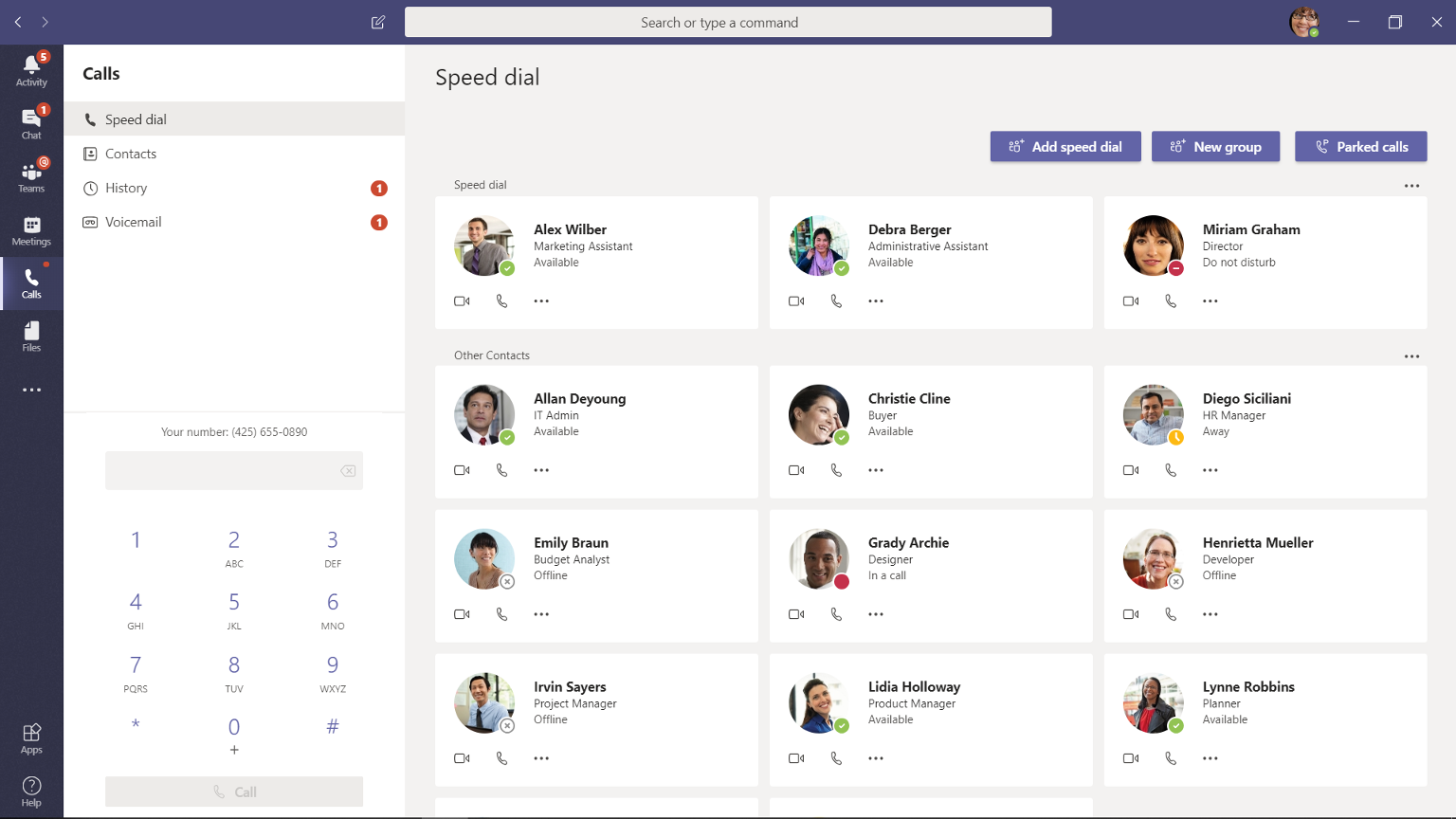
A lot of organizations have yet to jump on this feature set. It adds more cost to Office 365 which can slow down adoption. But if you’re lucky enough to have this, it truly brings all communication channels into Teams!
Now, if you don’t have Teams calling, you’ll want to look at the two sections below for starting a call with a colleague.
Using the Meet Now feature
You can pull people into an ad hoc call by starting a Meet Now call and inviting people directly to it. Here’s how:
- Go to your calendar in Teams and click Meet Now in the top-right corner.
- Give the meeting a name, set up your audio and video, then join the meeting.
- Invite people using the Invite someone box.
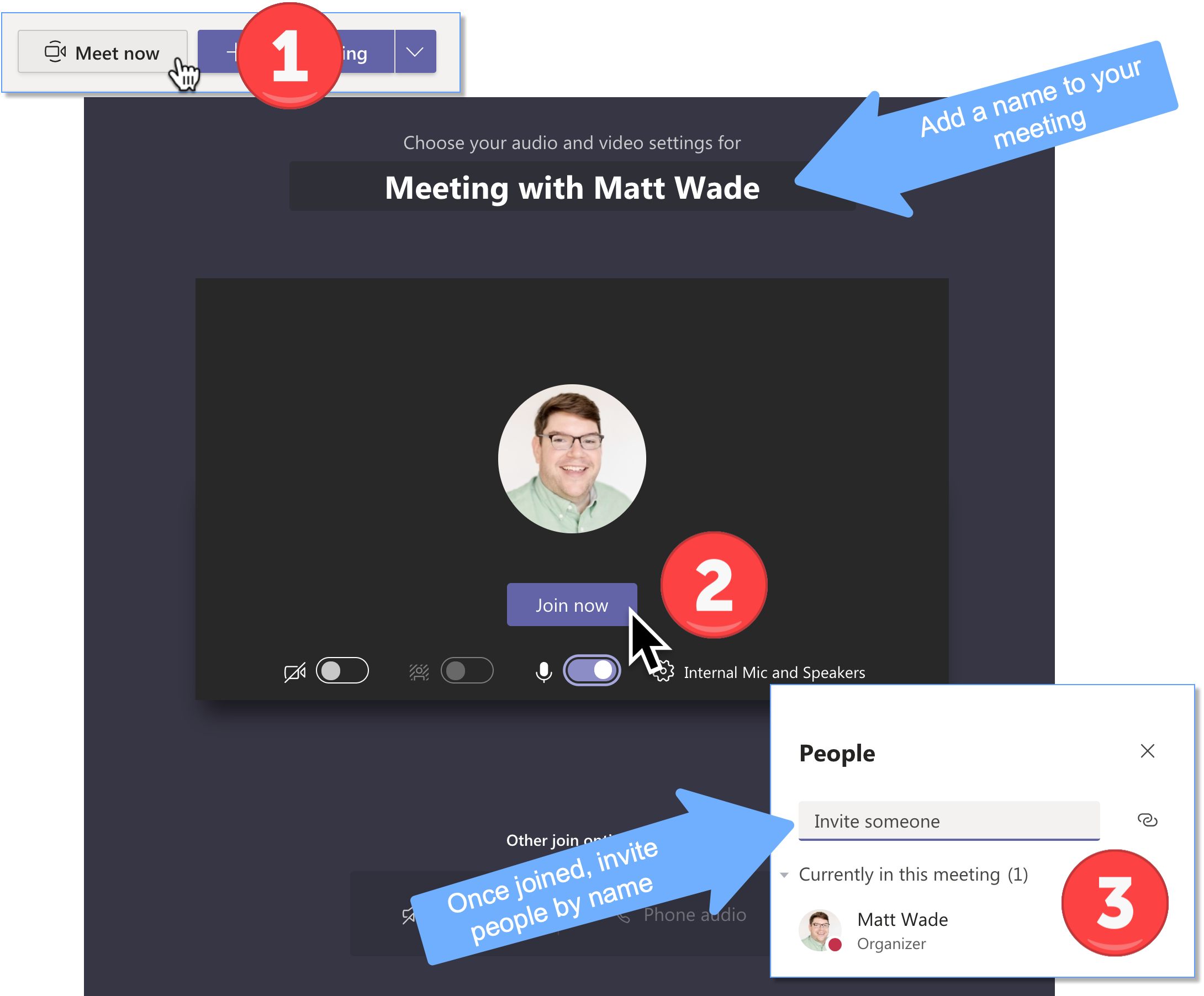
A major caveat with this method is you’ll only be able to invite people who are in your system (generally that means only people who you work with) or any external people who have already been added to a Team elsewhere in your system. It appears you cannot just add any email address you want.
From an ongoing group chat or one-to-one chat
Private chat in Teams is extremely useful for having ongoing conversations that don’t belong in a Channel. In both the desktop and mobile experiences, you can open an ongoing chat and click the video or phone icon to start a video call or audio call, respectively. And in the desktop experience, you can click the screen share button to start a screen share.
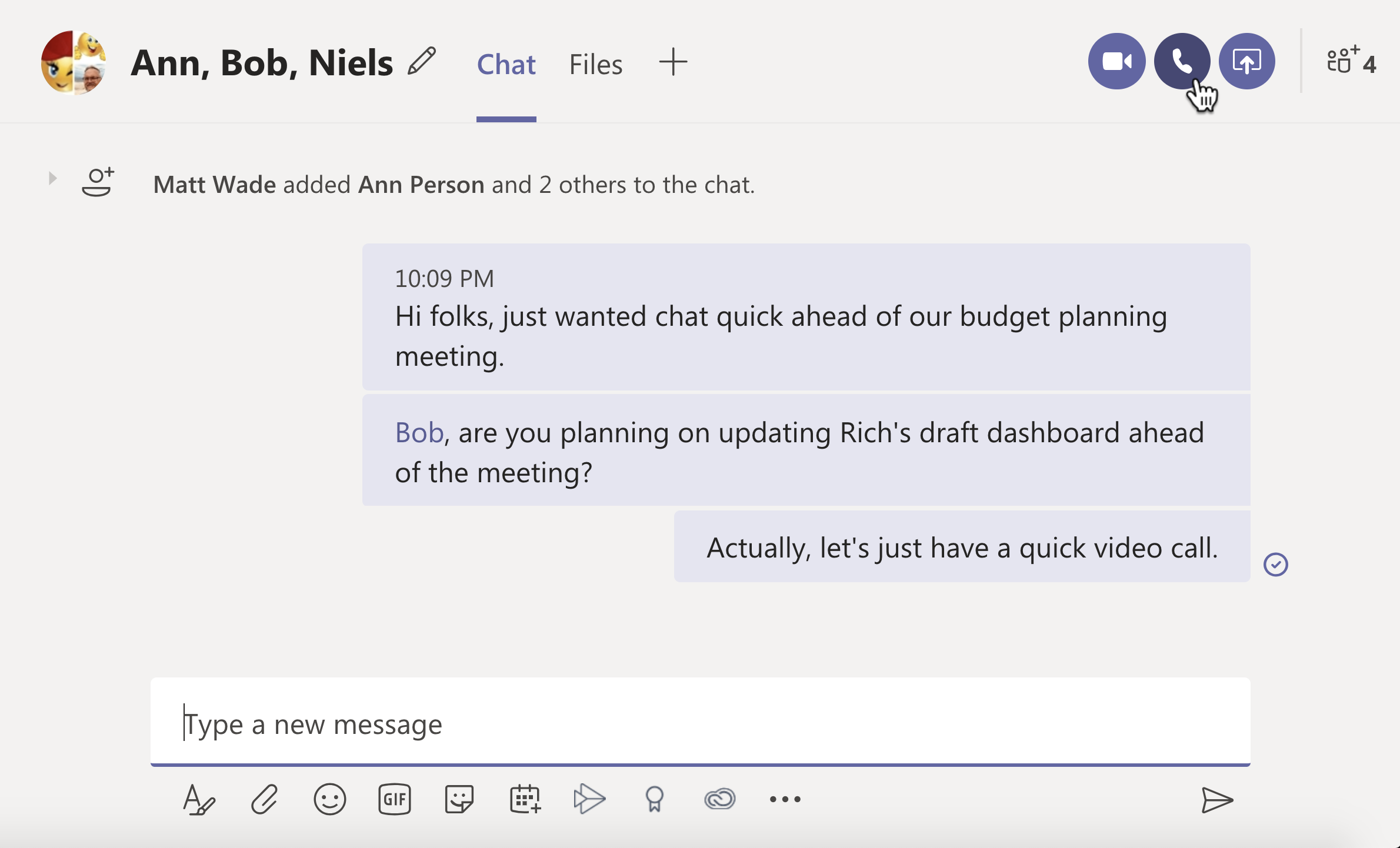
To a group of people you’re not already chatting with
It’s entirely possible that you need to get, say, your boss and your boss’s boss on the line together and you may never have had a chat with the two of them at the same time, so you don’t have the start call option from an ongoing chat.
But it actually works the same way. Simply start a new private chat, add the two individuals and Teams will identify this as a draft private chat. From there, click in the Type a new message box at the bottom of the chat, and the chat will be set up as normal. Click your start call button of choice and you’ve got your meeting going.

From a contact card
And of course you can call someone directly in Teams, just like if you were using a regular phone. In the desktop app, hover over that person’s face to display their contact card then click the video or phone icon to start a video call or audio call, respectively. The concept of a contact card doesn’t exist in the mobile app.
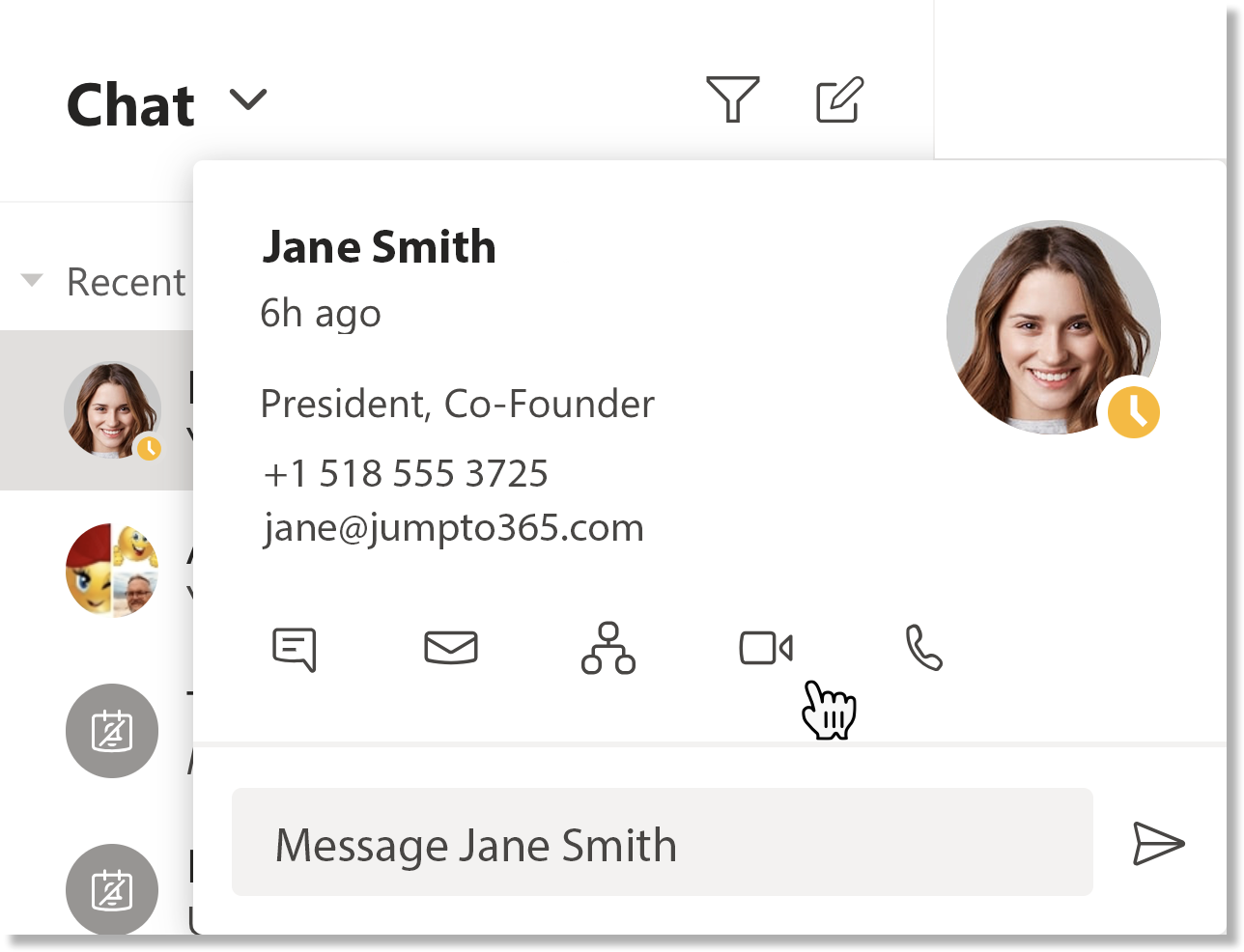
2. Starting an ad hoc meeting with members of a Team or Channel only
Each Team is made up of a group of people who are provided access. Each of the Channels in that Team can be followed or un-followed by those people. If you’re interested in starting an ad hoc meeting with the people in a Team or Channel, you can get it going super quick by the press of one button.

In the Channel of your choice, simply click the Meet now camera icon below the Start a new conversation text box. This works for all Channels, including Private Channels. (However, the ability to Schedule a meeting, as depicted below, is not available in Private Channels.)

As you can see from the screenshot above, you can also choose to schedule this as a Channel meeting sometime in the future. (Channel meetings are covered further down in this article.)
This limbo screen gives you some solace if you clicked the button by mistake and thought everyone was going to get a video call request from you that you couldn’t recover from! 😬
With this feature, you have a couple options:
- To start a call with the whole Team, kick off the meeting from the General Channel. Everyone has access to that Channel and nobody can remove themselves from it. It basically represents the whole Team membership.
- To include only people who follow a certain Channel, kick off the meeting from that Channel. This is useful if you want to not overwhelm the entire Team because not all of them may care about what goes on in that Channel. It also keeps the meeting conversations/chats in that Channel, meaning meeting chats stay on topic and in the right place.
Note that this is not equivalent to calling someone; they won’t get a notification on their desktop or mobile apps saying “Jane is calling you”. Instead, they’ll see that a call is ongoing in the Channel and they will have to take action to join. This is a conference call (where people join as they see fit) versus a multi-way call (where all recipients see their phones “ring”, indicating they need to “pick up”).
3. Schedule a meeting with internal and/or external attendees
Scheduling a meeting in Teams is super easy. It’s almost the exact same process as doing it in Outlook. Each meeting you create in Teams automatically includes a link in the footer to join the meeting.
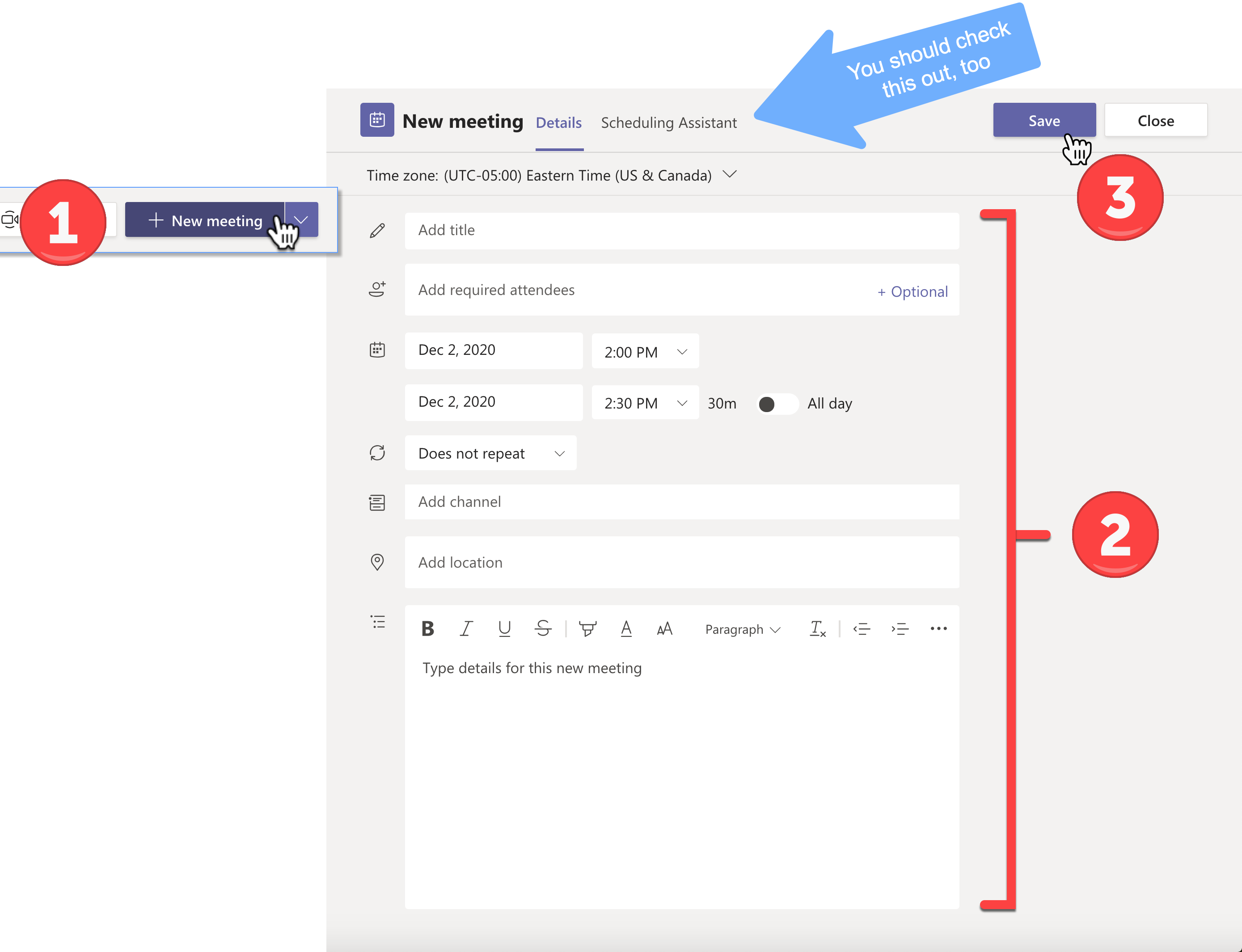

It doesn’t matter whether the recipients are in your organization or if they’re even using Teams at all. They can simply click the link and the meeting can be joined via their favorite browser; no downloading plugins!
If you have a call-in number (also known as a conference bridge, bridge line, etc.), this will be included near the join link for anyone to call from a typical phone. Conference lines come at an additional cost; if you don’t have one, you’ll have to talk to your IT administrator about it.
Schedule a Teams meeting from Outlook
Yes, you can schedule Teams meetings in Outlook. I advise not doing it; you're using Teams now, so just schedule in Teams. But for those diehards who need to use Outlook instead, it's easy to do.

- Create a meeting in Outlook. Important: an appointment won't give you this option because appointments are meant for only you. Meetings are meant to have invitees. If you create a new appointment, simply add an invitee and you'll get the Teams option.
- In the New Meeting window: 1) for Windows, in the ribbon click Meeting > Teams Meeting; 2) for macOS, in the ribbon click Organizer Meeting > Teams Meeting; 3) and in Outlook on the Web, there's a Teams meeting toggle to the right of the Location field.
- That's it.
If your organization still uses Skype for Business or hasn't gone into Teams-only mode (something your IT admin would know about), you'll also see Skype options. A Skype meeting is not a Teams meeting, so don't click that. In Outlook on the Web, in that situation you'll see a drop-down with both options, replacing the Teams meeting toggle.
If you don't see the Teams Meeting option in Outlook like shown above, you likely need to troubleshoot.
On Windows, you can also open your Outlook calendar and go to the ribbon > Home > New Teams Meeting directly. Though a lot of people aren't used to doing it this way, so I didn't mention this as the primary option.
4. Schedule a Channel meeting within a Team
One feature that’s a Teams-only option is the ability to schedule a meeting in a Channel within Teams. This is a very cool use of technology that’s really only available in Office 365 because of the Teams platform.
There are a few ways to schedule or start an ad hoc Channel meeting.
Scheduling from your calendar

Click + New meeting in the top-right of your calendar. You’ll get the standard page to set up a new meeting.
Near the bottom of the page, there’s an option called Add channel. From here you can select a Team and Channel where you want to set the meeting up.
You can even set the meeting as recurring.

From the Channel
Click the video icon to set up a new meeting.

From here you can click the Schedule a meeting button to schedule your meeting right in the Channel.

Why you may want a Channel meeting
There are some major benefits of this type of meeting:
- All Team members have the ability to join the meeting, even if they weren’t explicitly invited.
- Team members that aren’t interested in that meeting don’t have to join if they don’t want to.
- Any files shared during that meeting will be uploaded to that Channel’s files tab.
- Any chat/conversation that takes place during that meeting become a regular Channel conversation for future reference.
- Any notes taken during the meeting will be saved in that Channel.
- Anyone added to the Team immediately will see the meetings moving forward.
- Anyone removed from the Team (even if they were directly invited) will lose access to the meetings moving forward.

Beware of consequences that come with Channel meetings
A few caveats that come with this type of meeting:
- Even though all Channel members have access to the Team, only people who are explicitly invited will have the event on their calendar. This impacts accept/decline, availability status, etc.
- People who are not already members of the Team cannot be invited to a Channel meeting.
- Private Channels do not support Channel meetings.
Wrap up
Scheduling a meeting in Teams isn’t too much different from scheduling setting up an appointment in Outlook. But it comes with some cool new features, including a dedicated online meeting space with every appointment, the ability to keep meetings to a Channel, and more.
For some more information about making the most of Microsoft Teams, check out my etiquette guide, linked below. Comment on this article with questions or best practices of your own!
And for a crash course on using Teams on a day-to-day basis, you should check out my tips and tricks video. Open it in YouTube and expand the video description for a table of contents that will allow you to jump around to the topic(s) you care about most.





Obviously you have an opinion, so share it!